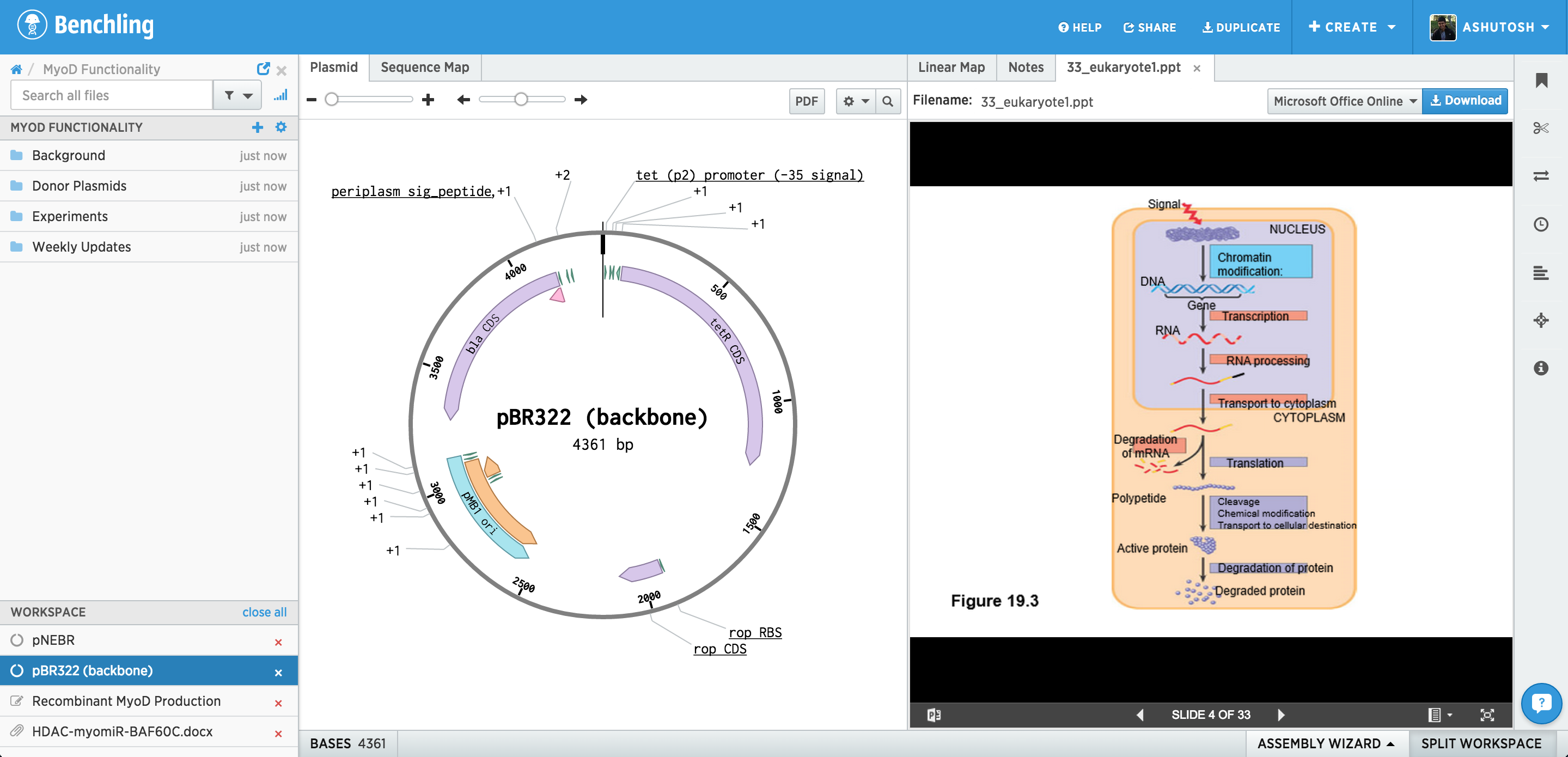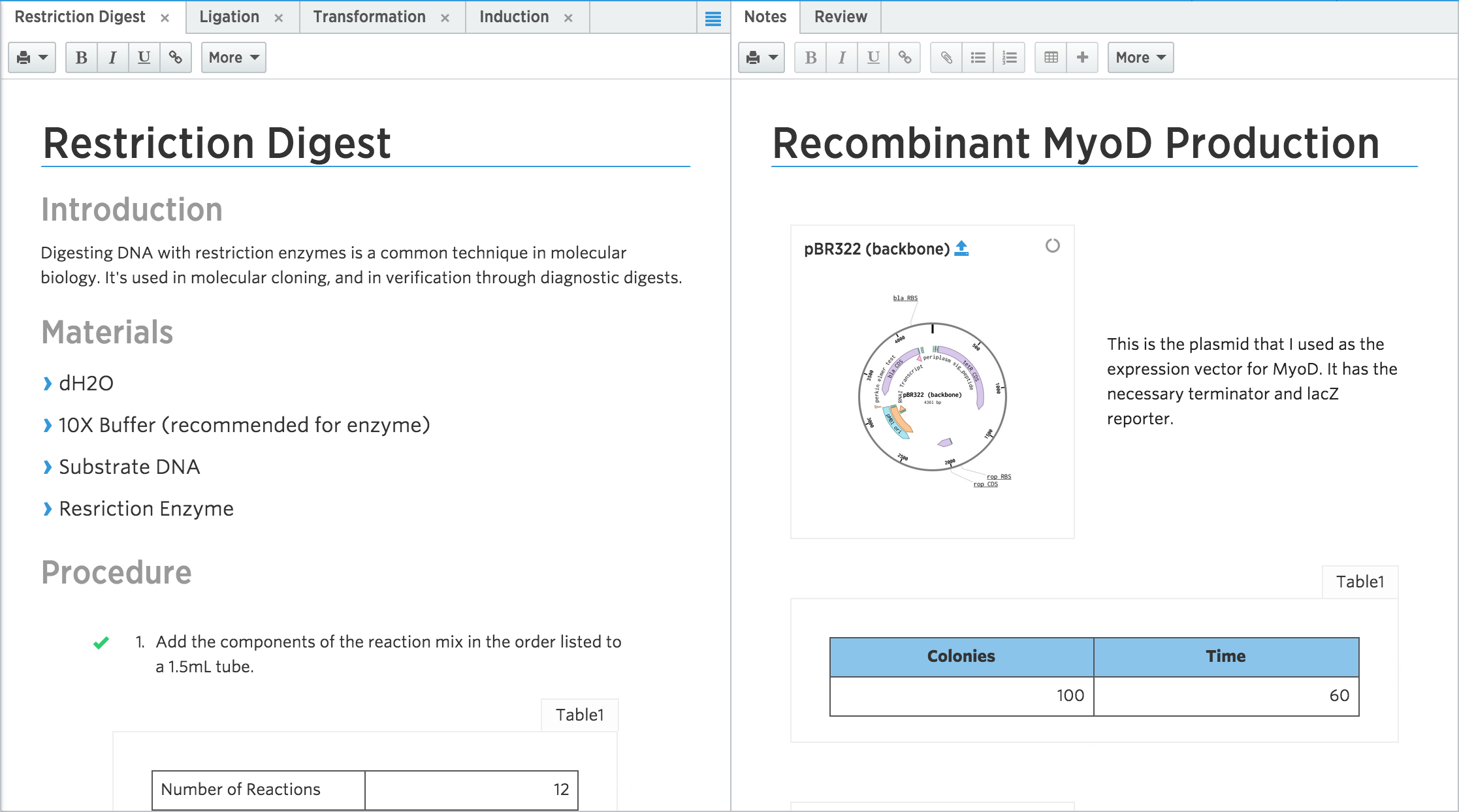The Benchling Research Platform
This post is from a while ago! Interested to see what Benchling has been up to more recently? Check out Benchling: Bringing Industrialization to the Biotech Revolution.
Over the last year, we've released applications that go beyond DNA editing in areas such as protocols, gels, and colony counting. We're excited to finally release updates that unify all of these applications and bring Benchling closer to becoming a complete platform for life science research.
In addition to a new, streamlined interface, we're releasing rich note-taking features and better data organization tools including subfolders. We hope the new Benchling will help speed up your research even more by helping you move off of disparate, generic tools like paper notebooks, Google Docs, Evernote, and wikis to a single, unified system that is optimized for how scientists work.
All of Benchling's existing functionality is also now completely free for all users. We're introducing a new enterprise plan that adds additional administrative, security, and support features.
Streamlined interface

When you visit benchling.com, you'll get taken to a new interface that allows you to browse folders and open any file (including sequences, protocols, gels, and more) from a single page.
Use the browser at the left to search and create new files and folders. Files you open get put into the workspace at the bottom. You can also open folders into a larger interface for editing tags by clicking the blue link at the top right of the browser.
The new interface supports drag-and-drop wherever possible. For example, you can drag a file into a folder ope in the file browser or workspace to move it. You can also drag a file from your computer into Benchling's file browser to upload it.
In addition to all of the existing file types you can work with, the new interface will also let you upload any document and see a preview of it. It supports PDFs, PowerPoints, Word documents, and more. When you search on Benchling, it includes the text inside these documents, making it easy to find old information.
Rich note-taking features

We're introducing a new file type called an entry, which is a place to take notes about an experiment you're planning, record observations, or even just jot down ideas. The core of an entry is the Notes tab, which supports richly formatted text, embedded spreadsheets, and references to other files. You can also pull protocols you're following into the entry. For more information on how to use entries, see this help page.
The Notes tab is present not just on entries but also on any file type you open in Benchling. (We've taken any pre-existing sequence descriptions and attachments and moved them into the notes.) Edits to notes are completely versioned and can be easily undone.
Better data organization
With this release, we're introducing projects, which house the active experimental data you and your colleages are working with, and resources, which hold general data like cloning vectors, lab-wide primer libraries, and standard protocols. See this help page for more information. For now, we've made a resource for each of your pre-existing folders.
Under a project or resource, you can save files and folders just like you can on a normal computer file system. Folders can now contain not just sequences but any file on Benchling. (We've dropped the distinction between sequence and oligo folders to make things simpler.) You can also create subfolders. To make a resource into a subfolder, just drag and drop it into its new location.
We'll be actively working on improving these new tools in the coming months. If you have any questions or feedback, click the help icon at the bottom right to get in touch.